At the beginning of 2010, the frequency of discussion of "Avatar" by Chinese people has exceeded the frequency of eating and weather. Because of "Avatar", 3D technology was completely raging in the winter of 2009. "3D is too realistic, absolutely immersive, the bullets in the movie will come over and you will definitely avoid it subconsciously!" - People who have seen the 3D version of "Avatar" are always relishing. But what I told you today is that "3D is not only Avatar, but stereo life is actually very simple." At the CES Consumer Electronics Show just recently, 3D has become a well-deserved core keyword; 3D products have been launched from TV, monitors to projectors , MP4 and other display devices; 3D broadcast will be realized in the 2010 World Cup in South Africa; The TV station that provides 3D graphics will be officially launched in 2010; the movie giant DreamWorks announced that the animations produced after 2009 are all 3D; there are hundreds of games supporting 3D; there are already 3D web pages on the Internet... After HD, 3D has become the next focus of display devices. Although countless readers are familiar with 3D, what exactly is 3D, what can 3D bring to us, what do we need to pay for 3D, what are the shortcomings of 3D technology? Most readers still have such questions. Today, the author will work with you to strip and twitch 3D technology and have a comprehensive and systematic understanding of 3D technology. Note : The author discussed the 3D technology of the image display industry. The 3D technology of the industry such as design and production is beyond the scope of our discussion. Glasses-type 3D technology Chromatic aberration The color difference type 3D has the longest history, the imaging principle is simple, and the realization cost is low, but the 3D picture effect is also the worst, and it is necessary to match the color difference type 3D glasses to see the 3D effect. The color difference type 3D first separates the spectral information by the rotating filter wheel, and uses different color filters to filter the picture, so that one picture can produce two images, and each eye of the person sees a different image. At present, our most common filter colors are usually red/blue, red/green, or red/green. Currently, there are fewer and fewer cinemas using this technology. Advantages: low technical difficulty, low cost disadvantages: 3D image quality is not the best, the edge of the picture is easy to color Shutter type The shutter type 3D technology mainly realizes the 3D effect by increasing the fast refresh rate of the picture (at least 120 Hz), and belongs to the active 3D technology. When the 3D signal is input to a display device (such as a display , a projector, etc.), the 120 Hz image is alternately generated in the frame sequence format, and the frame signals are transmitted through the infrared transmitter, and the received 3D glasses are refreshed. Simultaneously realize the left and right eyes to view the corresponding image, and keep the same number of frames as the 2D video. The two eyes of the viewer see different images that are quickly switched, and create an illusion in the brain (the camera can't shoot the effect), and then watch it. Stereoscopic image. NVIDIA's 3D stereo, Texas Instruments' DLP Link and XPAND 3D systems are all shutter-type 3D technology. From the perspective of the source, the shutter-type 3D technology has the most abundant resources, and the video and game with the refresh rate up to 120 Hz can achieve 3D stereoscopic effects. Thanks to NVIDIA's leading position in the graphics card market, and Texas Instruments DLP occupying half of the projector market, shutter-type 3D technology has become synonymous with 3D technology in the computer and projector industries. However, a major constraint of shutter-type 3D technology is the price of glasses. Because it is active glasses, the cost and price are high, which is difficult for many consumers to accept. Advantages: relatively large resources, strong promotion of manufacturers, 3D effect, excellent disadvantages: shutter glasses are expensive Polarized Polarized 3D is also called polarization 3D technology, which belongs to passive 3D technology. The price of glasses is also relatively cheap. At present, most 3D cinemas, 3D LCD TVs, etc. are polarized 3D technology. Like the shutter-type 3D technology, the polarized 3D is also subdivided into many types. For example, the polarized 3D used in the projector industry requires two or more projectors with the same performance parameters to achieve 3D effects, and is applied to the television industry. The polarized 3D technology requires a refresh rate of 240 Hz or more, and there are many differences in the way of implementation. In the polarized 3D system, there are three mainstream models in the market: RealD 3D system, MasterImage 3D, and Dolby 3D system. In particular, RealD 3D technology has the highest market share and is not affected by the panel type. It can help any 3D-enabled TV and monitor to produce high-definition 3D images. RealD, which owns this technology, mainly promotes through technology licensing. At present, it has already reached cooperation with Toshiba, Sony, JVC, Samsung and other companies, and its market share is far ahead in 3D cinema. Dolby 3D Digital Cinema consists of Dolby servers with built-in 3D color management, Dolby 3D filter wheel assemblies and Dolby 3D glasses. The design philosophy and advantages are passive glasses and white screens. It should be noted that the Dolby 3D system can be installed directly between the digital projector's light bulb and the imaging component. The filter is equivalent to the color wheel in the DLP projector . In other words, the Dolby 3D digital cinema uses the Texas Instruments DLP. The imaging core of the projector. In use, the Dolby 3D filter wheel is placed inside the current standard digital projector. Between the light bulb and the light engine, the pressure of the light engine can be reduced, and the color separation is completed before imaging, so the image quality is not degraded; the rotating filter The wheel is divided into two red, green and blue spectral information. The specially designed glasses can only receive their respective spectral signals in the left and right eyes. With the Dolby 3D digital cinema system, only one of the 2D and 3D movies is used. The file package can be used to maintain the filter wheel and the projector through the 1U size Dolby 3D filter wheel controller (DFC). The Dolby 3D filter wheel can be lowered into the light path, presenting a 3D effect, and can also rise to avoid the light path. The 2D effect is presented, which avoids the trouble caused by the double master; and the DFC operation is extremely simple, the lifting and lowering of the filter wheel is controlled by one button of the panel, and the panel can visually display three working states. Advantages: Polarized glasses are cheap, 3D effect is excellent, market share is big. Disadvantages: installation and debugging are cumbersome, and the cost is not cheap. Naked eye 3D technology In the previous section, we mentioned that the naked-eye 3D technology is mostly in the research and development stage, and is mainly used in the industrial and commercial display market, so there is not much contact with the mass consumers. From a technical point of view, the naked eye 3D can be divided into three types: Barrier, Lenticular Lens, and Directional Backlight. The biggest advantage of the naked-eye 3D technology is that it is free from the constraints of glasses, but there are still many shortcomings in terms of resolution, viewing angle and visual distance. In the exhibition industry new products exhibition, I have been fortunate enough to see nearly ten naked-eye 3D display devices. During viewing, the viewer needs to maintain a certain position with the display device to see the 3D effect image (the 3D effect is greatly affected by the viewing angle), and there is still a certain gap between the 3D image and the common polarized 3D technology and the shutter 3D technology. . However, the reader can tell the reader that LCD panel industry giant AUO, R&D giant 3M, etc. are already actively researching and developing. It is expected that some naked-eye 3D display devices will be mass-produced this year and next. Light barrier (Barrier) Light barrier 3D technology, also known as parallax barrier or parallax barrier technology, is similar in principle to polarized 3D and has been successfully researched by Sharp's European laboratory engineers for more than a decade. The light barrier type 3D product is compatible with the existing LCD liquid crystal process, so it is advantageous in terms of mass production and cost, but the image resolution and brightness of the product using this technology will decrease. The light barrier type 3D technology is realized by using a switch liquid crystal panel, a polarizing film and a polymer liquid crystal layer, and using the liquid crystal layer and the polarizing film to produce a series of vertical stripes with a direction of 90°. These stripes are several tens of micrometers wide, and their light forms a vertical thin-gate pattern called a "parallax barrier." The technology utilizes the parallax barrier disposed between the backlight module and the LCD panel. In the stereoscopic display mode, when the image that should be seen by the left eye is displayed on the liquid crystal screen, the opaque stripes will block the right eye; similarly, When the image that should be seen by the right eye is displayed on the LCD screen, the opaque stripes will block the left eye, and the viewer can see the 3D image by separating the visible images of the left and right eyes. Advantages: Compatible with existing LCD liquid crystal processes, so it has advantages in mass production and cost. The screen brightness is low, and the resolution is inversely reduced as the display is increased at the same time. Lenticular Lens technology The Lenticular Lens technology, also known as lenticular or microcolumn lens 3D technology, has the greatest advantage that its brightness is not affected. The principle of the lenticular lens 3D technology is to add a lenticular lens to the front of the liquid crystal display so that the image plane of the liquid crystal panel is located on the focal plane of the lens, so that the pixels of the image under each cylindrical lens are divided into several sub-pixels. This allows the lens to project each sub-pixel in a different direction. Then the eyes look at the display from different angles and see different sub-pixels. However, the gap between pixels is also amplified, so the sub-pixels cannot be simply superimposed. Let the cylindrical lens be parallel to the pixel column, but at an angle. This allows each set of sub-pixels to be repeatedly projected into the viewport instead of just projecting a set of disparity images. The reason why its brightness is not affected is because the lenticular lens does not block the backlight, so the brightness of the picture can be well protected. However, since its basic principle of 3D display is still similar to the parallax barrier technology, resolution is still a difficult problem to solve. Advantages: 3D technology shows better results, brightness is not affected. Disadvantages: related manufacturing is not compatible with existing LCD liquid crystal processes, and it is necessary to invest in new equipment and production lines. Directional Backlight technology Mainly invested in Directional Backlight 3D technology, 3M Company, Directional Backlight 3D technology with two sets of LEDs, with fast response LCD panel and driving method, to make 3D content sorted. The way to enter the viewer's left and right eye interchangeable images produces parallax, which in turn makes people feel the 3D three-dimensional effect. Not long ago, 3M has just demonstrated its successful 3D optical film. The interview of this product enables real 3D stereoscopic images to be displayed on mobile phones , game consoles and other handheld devices without wearing 3D glasses. Mobile-based communication and interaction. Advantages: resolution, light transmittance can guarantee, will not affect the existing design architecture, 3D display effect is excellent. Disadvantages: technology is still developing, products are not mature Other naked eye 3D technology In April 2009, PureDepth of the United States announced the development of an improved naked-eye 3D technology, MLD (multi-layer display), which can be used without the use of two LCD panels that overlap at regular intervals. In the case of glasses, the effect of 3D images when viewing text and pictures. In addition, the domestic manufacturer Ouya Baolong's Bolod naked-eye 3D display has now developed to the fourth generation, and the products are all HD display, leading in the domestic 3D display industry. Of course, due to the non-market mainstream, for MLD technology and Bolod naked-eye 3D display, we only do a simple understanding this time, do not do in-depth technical discussion. For 3D display technology, consumers are not a good voice, the author has heard a lot of opposition. In the following, the author will sort out these opinions and let everyone keep a clear head, and must not blindly follow. First, the 3D market is extremely chaotic The chaotic market can be said to be the biggest problem facing the 3D market. As a new type of display technology, 3D technology is currently in a booming stage, but the entire 3D industry has no uniform standards, not only consumers are dizzy, but some manufacturers' technicians also have a headache. As I wrote this article, I also scratched my head for the many different 3D technologies. If you want to make a revolutionary breakthrough in the entire market, then the development of relevant 3D industry standards has become an urgent matter. In the 3D content production, media transmission, signal interface, display decoding and other aspects are recommended corresponding specifications, so that manufacturers have rules to follow in the production and development, but also consumers clearly understand. Second, 3D makes some viewers dizzy Most of the audience have finished singing "Avatar", but we should not ignore some viewers who have symptoms such as dry eyes, eye pain, dizziness and nausea due to the 3D version of "Avatar". It is reported that there are still viewers watching the movie. Acute glaucoma. According to the author's understanding, there are already many professional ophthalmologists who recommend glaucoma, refractive errors, and eye muscle problems to give up watching the 3D version of "Avatar." 3D images are virtual and real. These dynamic virtual images make it difficult for people to focus on the eye. It is easy to see dizziness and headache when watching for a long time. In addition, the light in the cinema is dark, the pupils of the audience will naturally enlarge, and the 3D picture is also very irritating to the eyes, and the intraocular pressure will also increase, causing symptoms such as dry eyes and eye pain. Third, 3D resources are scarce Want to watch 1080p HD video? A random search on the Internet will be dazzling. But what about 3D content? Although there are as many as 100 games supporting 3D, there are still few 3D movies projected in theaters every year. Other resources such as 3D pictures are rare. In this case, consumers have several reasons to spend several times. The price to buy a "flashy" product? For 3D product manufacturers, from the perspective of the long-term development of the industry, it is undoubtedly wrong to put all the enthusiasm into the product development and promotion. As an ordinary consumer, the author only has to experience the shocking and realistic 3D effect, and understand that the market is full of a lot of 3D resources to purchase 3D display devices, I believe that there is more than one author. Fourth, most 3D products do not support 1080p full HD Maybe after a year or two, this problem will be completely solved, but from the current situation, 3D devices that do not support 1080p Full HD still occupy most of the market. I finally felt the clarity and vividness of 1080p, but now I chose to give up for 3D. I believe that few consumers will agree. Fortunately, after more than 10 years of development, 3D technology has finally broken through this bottleneck in recent years, and most of them have been able to support 1080p content. It is foreseeable that the future large-screen 3D display devices are compatible with 1080p HD, and both are indispensable. Five, wearing 3D glasses has many inconveniences "I have already worn a pair of myopia glasses. When I watch a 3D movie, I have to add a pair of 3D glasses outside. The nose pressure is not painful. The 3D glasses are still dirty and broken. In the process of watching movies, I am going down." - Xiao Wang, a colleague who just finished reading "Avatar," complained. The problem of inconvenient wearing 3D glasses is for glasses-type 3D technology, but in the current market, there are few naked-eye 3D products, and mass consumers default to 3D technology, which requires glasses. The topic went back to "Avatar". According to some media reports, during the "Avatar" hotspot, various 3D glasses sold on Taobao to create new peaks. It seems that people's comfort, size, effect, etc. on cinema movies are still There are a lot of concerns. Does 3D represent the end of display technology? Not also! I believe that some of the avant-garde readers have heard the new terms such as "4D Cinema" and "Holographic Image". So what are these refers to? The author here also makes a brief introduction for everyone. 4D Cinema is developed on the basis of 3D cinema. In addition to the traditional 3D visual shock, it also carefully designed the effects of smoke, rain, photoelectric, air bubbles, smell, scenery, and character performance according to the plot of the film. Compared with traditional 3D movies, viewers can feel the sense of touch, smell and other aspects in addition to sight and hearing when watching 4D movies. At present, the source of 4D movies is even rarer, and the audience has a limited range of choices. The author has not found a formal commercial 4D movie for the time being. Holographic images are also currently undergoing rapid development. Some of the plots in the films such as "Star Wars" and "The Rise of the Special Forces Cobra" have shown us the possibility of holographic imaging technology in the future. In addition, CNN reported that during the Obama campaign, the holographic image provided a lot of help for the interaction between the hosts in different locations. In a strict sense, holographic images are not within the scope of 3D technology. If you want to see a holographic image, you must first improve the shooting equipment. When shooting screen holographic photography recording machine not only reflective intensity on the object, but also the recording phase information. When viewing, you need a polygonal pyramid made of a medium with high transparency, and then optically reflected to see the stereo effect. As an emerging technology, the resolution and capacity of holographic imaging technology have not been properly solved, and the time to watch holographic movies is far away. Written in the end : After decades of experience, 3D technology has achieved rapid development. Of course, for us ordinary consumers, there is no need to understand such a complicated 3D technology, all we need is a 3D display product with better effect, lower difficulty and lower price. For 3D technology, we have been waiting for decades, does it mean that we are welcoming the dawn? For more details on 3D technology, please pay attention to the Pacific Computer Network projector channel, we are also keeping an eye on the progress of the 3D industry. [ 55 LUMENS – Our long-lasting LED puck lights shine brighter with a 55 lumen, 3000K warm white glow. This LED under cabinet lighting will illuminate any area of your home. The LEDs never need to be replaced Led Puck Light,Cob Puck Light,Remote Control Light,Cordless Light Switch Ningbo Wason Lighting Technology Co.,Ltd , https://www.wasonlight.com Have you seen "Avatar"? Is it a 3D version? 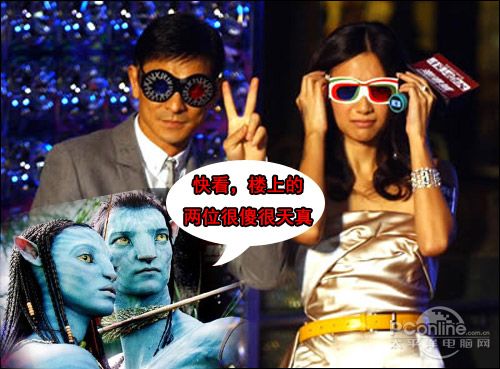
3D "Avatar" is coming! Didn’t see OUT? 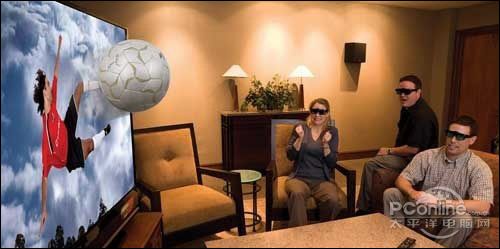
Extra! Extra! South Africa World Cup will be broadcast in 3D!
D is the English Dimension (line, dimension) prefix, 3D refers to the three-dimensional space. Compared to ordinary 2D images, 3D is more realistic and realistic, giving viewers an immersive feel. The current 3D technology can be divided into two types: naked-eye and glasses. The naked-eye 3D technology is mainly used in industrial and commercial display (will be applied to display devices such as mobile phones in the future); glasses-type 3D technology is concentrated in the consumer market. All the glasses used in the world to watch "Avatar" are glasses-type 3D technology. If subdivided, the glasses-type 3D technology can be divided into three types: color difference type, shutter type and polarization type (also called color division method, time division method, and light division method), while the naked eye type 3D technology can be divided into lens array and barrier fence. And pointing to the light source, the principle and imaging effect of each technology are different. The author below briefly introduces the principles, advantages and disadvantages of these six 3D technologies. 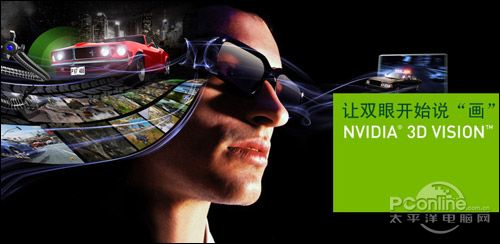
NVIDIA: Our glasses are active, so it's expensive 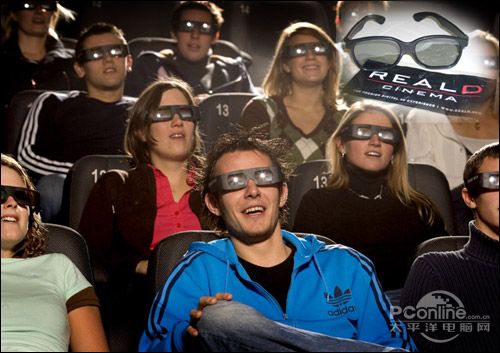
RealD 3D: Yes, we are definitely ahead of the market. 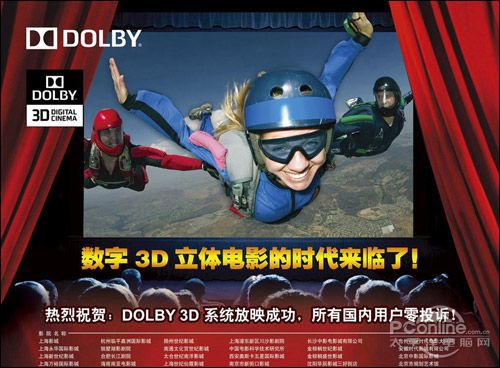
Dolby: We not only have stereo sound, but also stereoscopic vision. 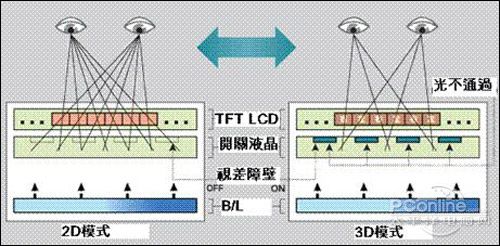
Barrier technology 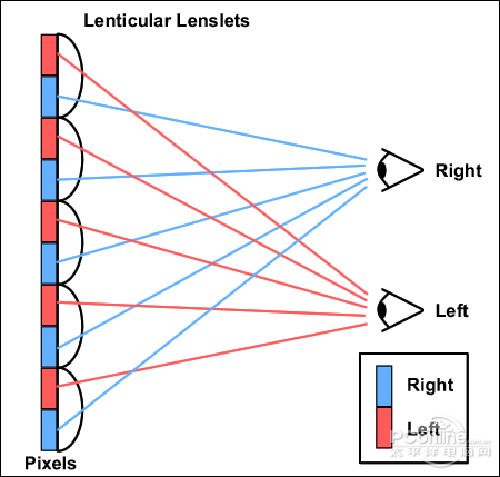
Lenticular Lens technology diagram 
3M pointing light source 3D technology 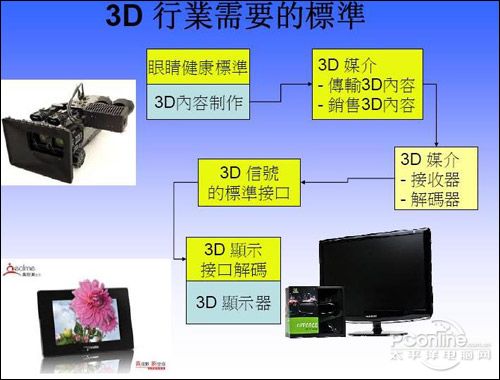
3D industry urgently needs to develop uniform standards 
I am dizzy, no, come and help... 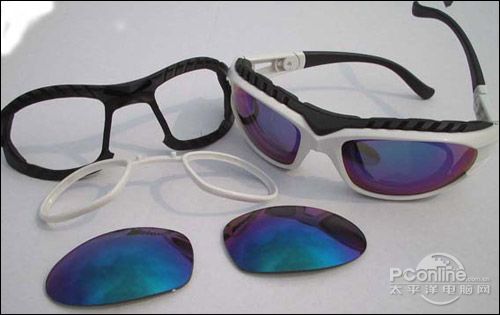
Just watching a movie, you still need to wear glasses, it’s really tossing. 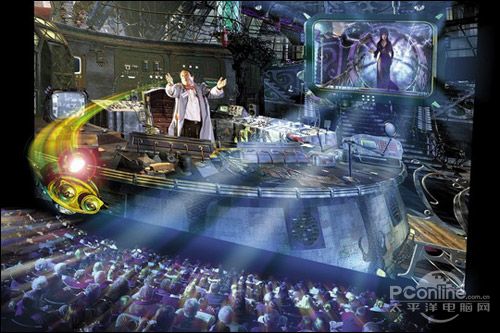
4D theater is more cool and more realistic, but no commercial film source 
The female host on the right turned out to be a virtual (holographic image). Did you see it?
WIRELESS REMOTE – The remote control lights include a dimmer, an optional auto off timer and on/off capabilities for convenient control of your lights. The included wireless remote will allow you to control up to 12 puck lights up to 15 feet away
SELECTABLE DIMMER - Select your desired level of brightness or press the 50% or 100% brightness button on the wireless remote
OPTIONAL AUTO OFF TIMER - Set the under cabinet lights to turn OFF with the optional timer in 15, 30, 60 or 120 minutes to converse battery life
100 HOUR RUN TIME – Each of our battery operated lights last up to 4 times longer than other puck lights on 3 AA batteries (18 included). Simply replace the batteries by twisting the light off of its base and insert new batteries